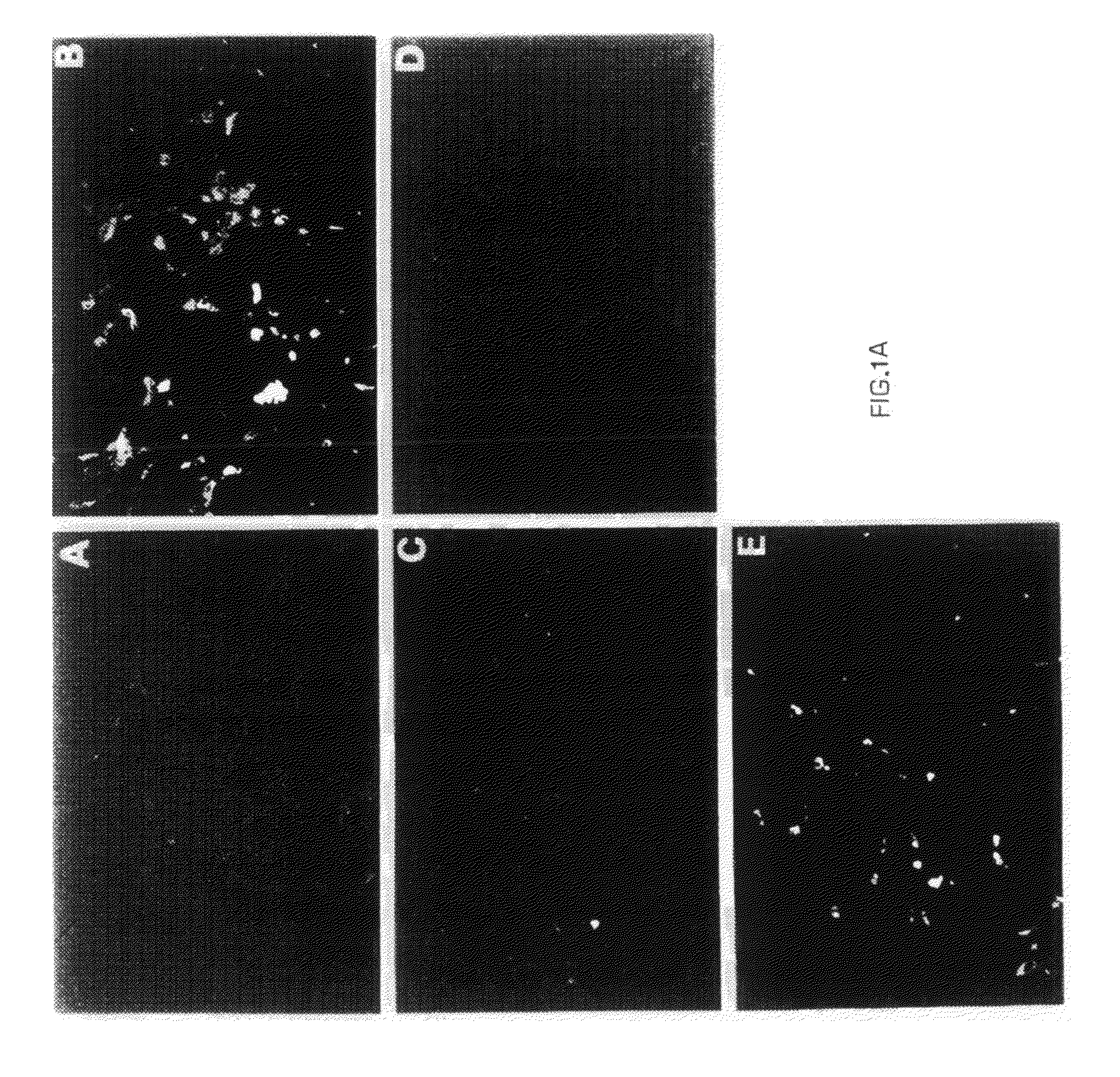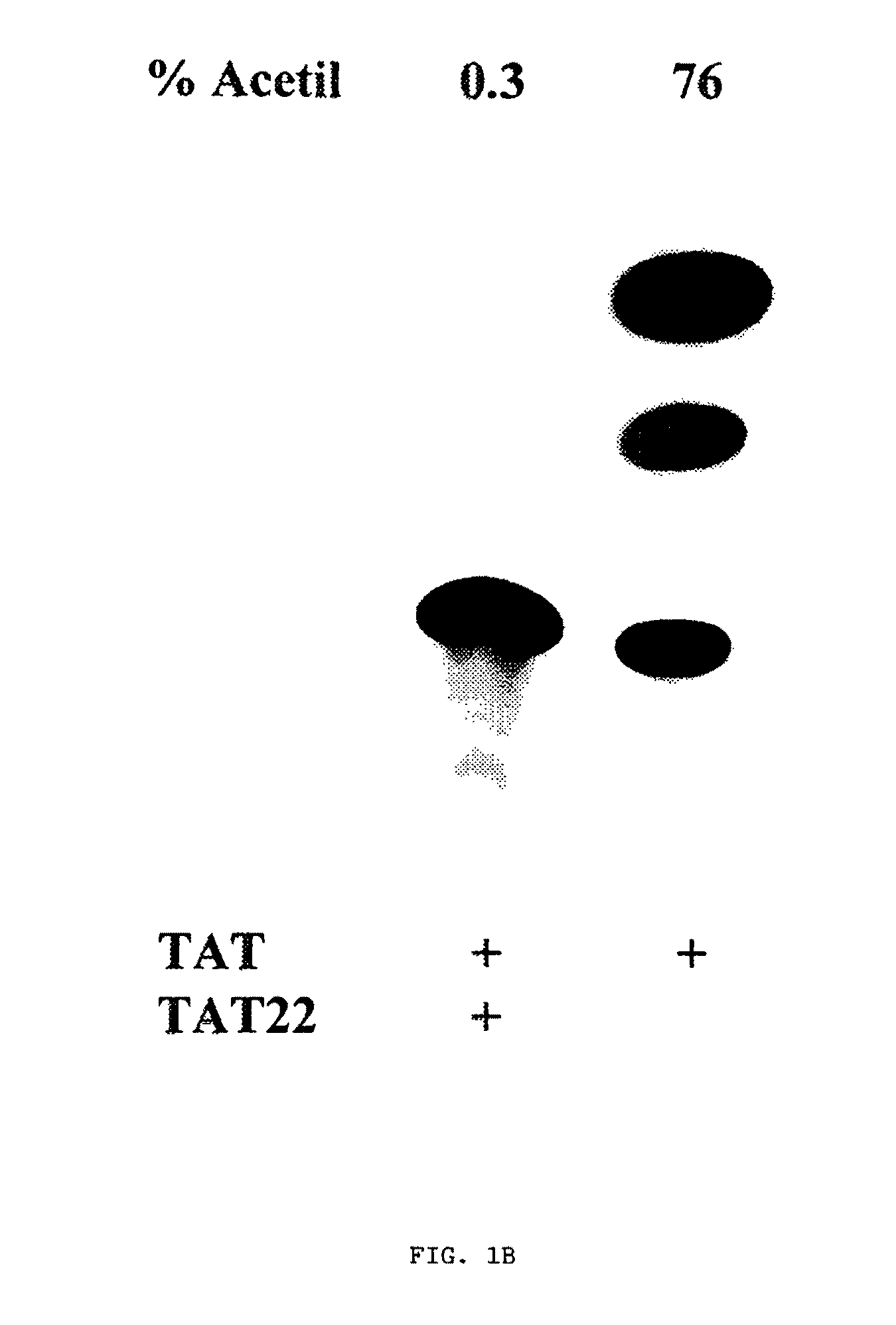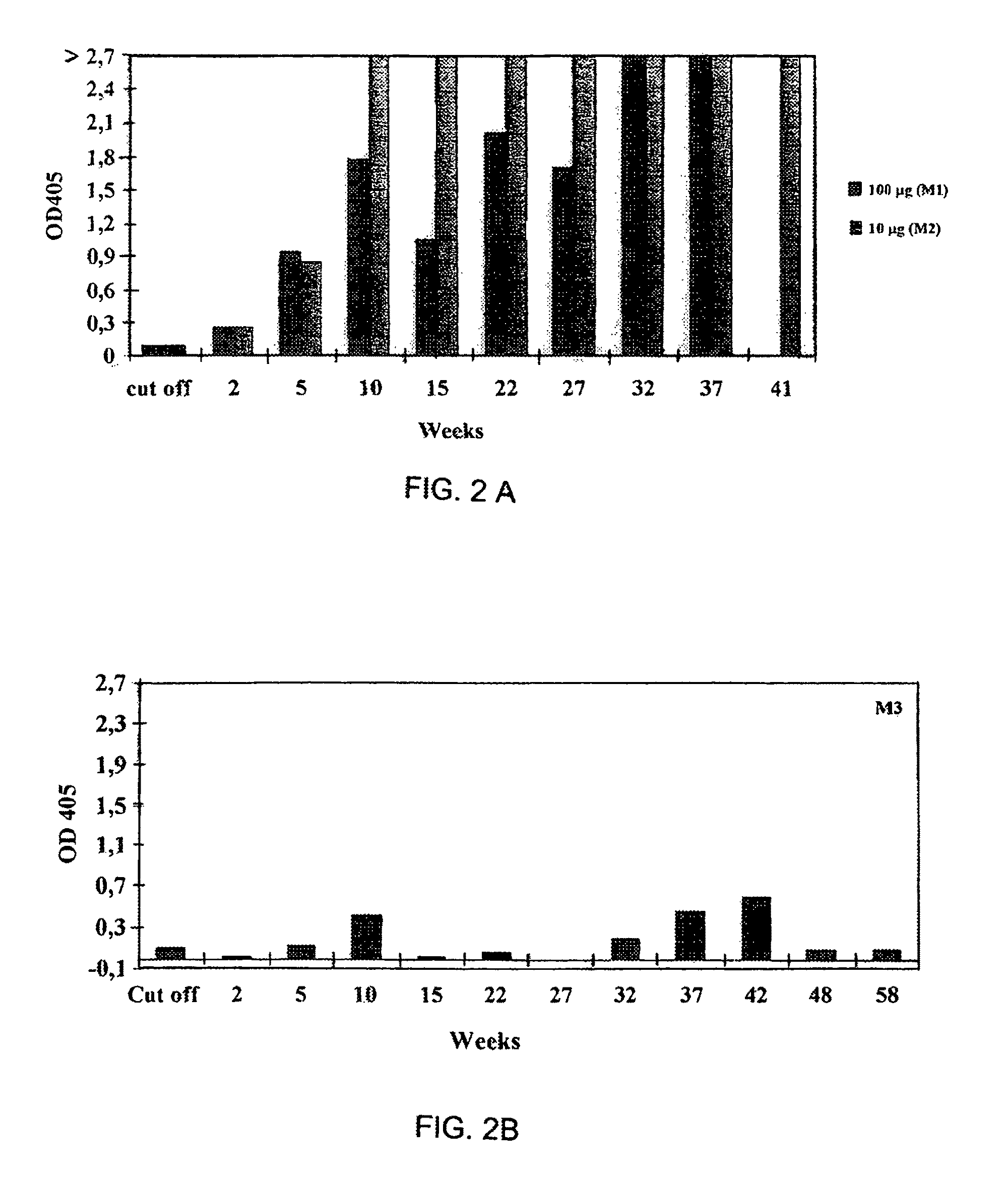HIV-1 Tat compositions
a technology of tat composition and tat, which is applied in the field of tat compositions for hiv-1, to achieve the effect of increasing the immune respons
- Summary
- Abstract
- Description
- Claims
- Application Information
AI Technical Summary
Benefits of technology
Problems solved by technology
Method used
Image
Examples
example 1
Expression, Purification and Characterization of the Wild Type Tat Protein (IIIB Isolate), Mutated Tat Proteins and Wild Type Tat Peptides
[0109]Many difficulties have been encountered in the past to purify and maintain the biological activity of the Tat protein owing to the easiness to oxidate, aggregate and lose activity. This is due to the high amounts of cysteine residues which can form intra- and inter-molecular bonds, thus modifying the conformation of the native protein (Ref. 159, 41). The cDNA or the tat gene (SEQ ID NO:1, example 2), which has been cloned in the pL-syn vector, provided by Dr. J. F. DeLamarter and B. Allet (Glaxo Institute for Molecular Biology S. A., Ginevra, Svizzera), has been used for the expression of the protein in E. Coli.
[0110]In order to achieve an efficient immunization with Tat for vaccine purposes, the inventor considers fundamental to obtain a biologically active Tat protein as described in the section “Detailed description of the invention”. Th...
example 1a
Uptake of Picomolar Concentrations (10 to 100 ng / ml) of Biologically Active Tat by Activated Endothelial Cells is Mediated by Integrin Receptors
[0118]When normal endothelial cells are activated in vitro with inflammatory cytokines, they become responsive to the effects of extracellular Tat and this is due to the induction of the α5β1 and αvβ3 integrins (Ref. 9, 10). Similarly, inflammatory cytokines (IC) or bFGF increase integrin expression on endothelial cells in vivo and this leads to a synergistic KS-promoting effect when a biologically-active Tat is inoculated in mice simultaneously or after bFGF (Ref. 42). In addition, IC-activated endothelial cells acquire APC function.
[0119]In this example it is shown that endothelial cells activated with IC take up rhodaminated biologically-active Tat protein more efficiently and that this is mediated by the integrin receptors.
[0120]Because of the difficulty in observing the internalization of very low concentrations of cold Tat, the protein...
example 2
Construction and Characterization of Mutated Tat Genes
[0131]We produced 19 mutants in different Tat regions by means of site specific mutagenesis or by deletion. The sequence of each mutated DNA was controlled by sequencing. The cDNAs of the tat mutated genes were cloned in the PstI site of the pCV0 vector, described in the Example 3. Each mutant was co-transfected, as described by Ensoli et al. (Ref. 41) in COS-1 cells or in the Jurkat T-cell line with the HIV-1 LTR-CAT plasmid, in which the CAT reporter gene is driven by the HIV-1 LTR. The results of these experiments, not published, are reported in Table 2.
[0132]
TABLE 2Effect of Tat mutants on the HIV-1 LTR-CAT transactivation andblocking effect (negative transdominant) on the Tat wild-type activityTrans-dominant activitybTransactivating activitya(% inhibition)MUTANTSMean (fold)(min-max values)MeanCYS 220.09(0.021-0.22) 21THR 230.36(0.16-1 )THR 23A0.30(0.16-0.78)ASN 240.34(0.34-0.82)ASN 24A0.42(0.45-0.95)TYR 260.14(0.08-0.19)LYS...
PUM
| Property | Measurement | Unit |
|---|---|---|
| concentration | aaaaa | aaaaa |
| concentrations | aaaaa | aaaaa |
| concentrations | aaaaa | aaaaa |
Abstract
Description
Claims
Application Information
 Login to view more
Login to view more - R&D Engineer
- R&D Manager
- IP Professional
- Industry Leading Data Capabilities
- Powerful AI technology
- Patent DNA Extraction
Browse by: Latest US Patents, China's latest patents, Technical Efficacy Thesaurus, Application Domain, Technology Topic.
© 2024 PatSnap. All rights reserved.Legal|Privacy policy|Modern Slavery Act Transparency Statement|Sitemap



